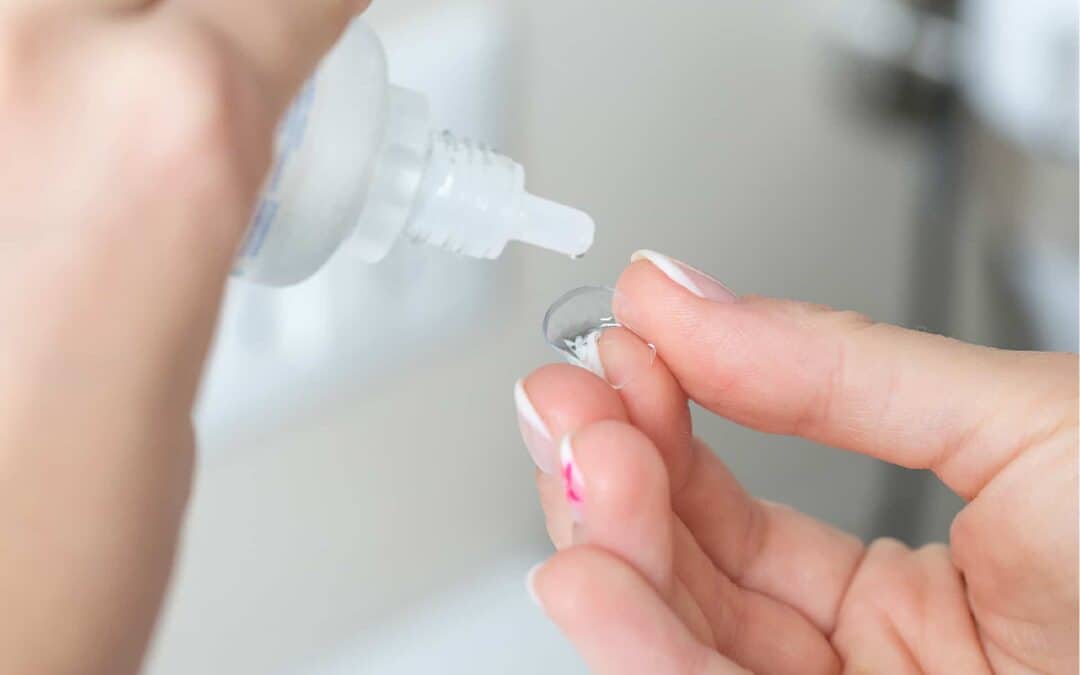The information below is intended as a supplement to the training and instruction you
receive from your doctor of optometry as part of a contact lens fitting program. As part of the
program, your doctor of optometry will make several recommendations that may include:
- Wear your contacts only for the length of time recommended, even if they feel
comfortable. - Remove, clean and disinfect your lenses at the intervals prescribed.
- Only use the cleaning and disinfecting system prescribed by your doctor of
optometry.
Have regular eye examinations. Don’t sleep or nap while wearing your contacts unless specifically indicated.
Don’t use any eye medications or eye drops without consulting your doctor of
optometry.
How to insert your soft contact lenses.
- Wash your hands with a mild cream-free soap, rinse completely and dry with a lint-
free towel. - Avoid using your fingernails to handle your lenses.
- If you’re working near a sink, close the drain.
- Get in the habit of always working with the same (right or left) lens first to avoid mix-
ups. - Either remove the lens from the storage case with your fingertip or pour the lens and
storage fluid from the case into your palm. - Inspect the lens for particles, deposits or tears.
- Place the lens, cup side up, on your dry forefinger. Determine if the lens is right side
out. If it is right side out, the lens’ edge will appear almost straight up. If inside out,
the edges will flare out slightly. Another test to determine if the lens is right side out
is to place the lens on a crease in the palm of your hand and then cup the hand
slightly. This will flex the lens. If the edge of the lens curls inwards, it is the correct
way out; if the edge curls outwards and wraps onto the palm of the hand, it is inside
out. If it is inside out, reverse it. - Pull the bottom eyelid down using the middle finger of the hand that is holding the
contact lens. - Hold the upper lid and lashes with the other hand to prevent blinking.
- Look up so the white part of your eye shows.
- Place the lens onto the exposed white part of your eye.
- Or, instead of looking up, look straight ahead into the mirror and gently place the
lens on to the cornea. - Move your finger away and slowly let go of your eyelids, bottom lid first, and then
top. - Look downward to help position the lens properly then slowly close your eye
momentarily. - Follow the same steps to insert the other lens.
- You can apply one or two drops of prescribed lens lubricant (eye drops) to your eyes
on occasion if your lenses feel dry or if blurry vision occurs during wear. If you feel
that this is required more than once during each wearing period, consult your doctor
of optometry.
How to remove your soft contact lenses
- Wash your hands with a mild cream-free soap, rinse completely and dry with a lint-
free towel. Then close any nearby drains. - With your head straight, look upwards as far as you can.
- Place your middle finger on the lower eyelid of your eye and pull the eyelid down,
then touch the lower edge of the lens with the tip of your index finger. - You may want to hold the upper lid and lashes with the other hand to prevent
blinking. - While still looking up, slide the lens down to the white part of the eye with your index
finger. - Still looking up and holding the lens with the index finger, move your thumb so that
you can compress the lens lightly between the thumb and the index finger. Then
gently remove the folded up lens from the eye. - You will not feel the lens between your thumb and finger, but you will feel it come off
your eye. - Remove the other lens following the same procedure.


